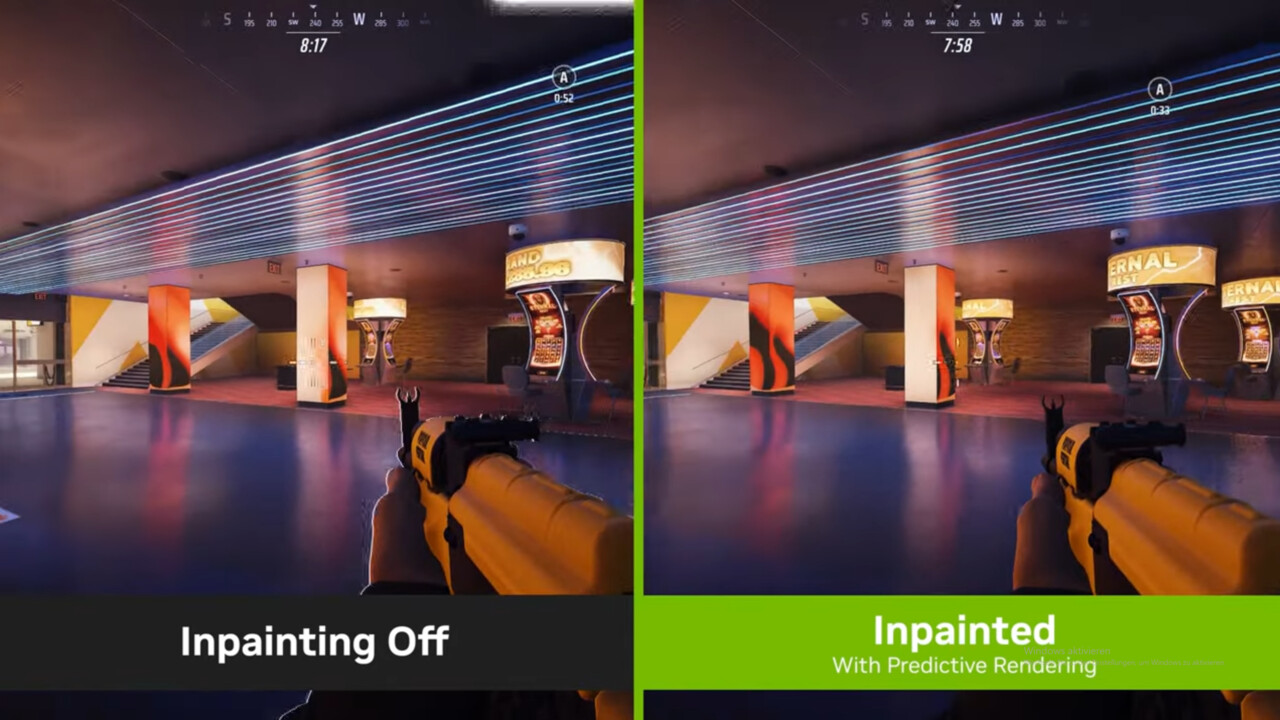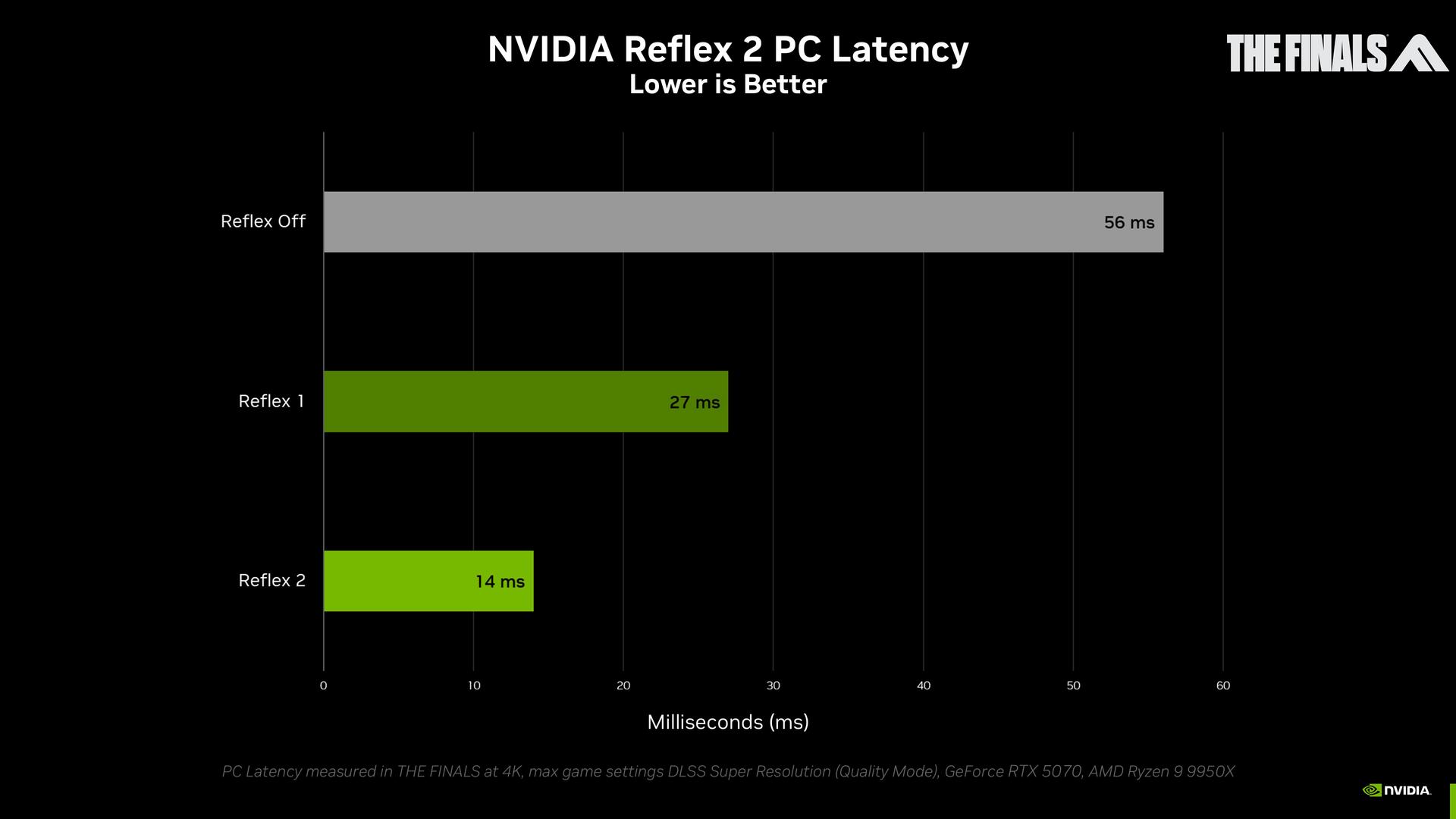Nvidia Reflex 2 in detail: How Frame Warp reduces latency in all scenarios 48 comments

Image: Nvidia
With the GeForce RTX 5090, GeForce RTX 5080, GeForce RTX 5070 Ti and GeForce RTX 5070, Nvidia introduced the Reflex 2, intended to further reduce latencies compared to the 1st generation Reflex. In a blog post, the chip developer explains how it is supposed to work and what the results are.
Table of Contents How Frame Warp reduces latency in all scenarios Reflex 2 with Frame Warp in detail Asynchronous Timewarp (VR) sends its greetings Reflex 2 updates rendered images “Predictive rendering” against cracks in the image Benchmarks for latency advantage First the RTX 5000, then all GeForce RTXs
Reflex 2 with Frame Warp in details
Reflex 2 is based on regular Reflex, so low latency Reflex mode (can be integrated into the game via API) is still in the game. However, Reflex 2 also uses a technology called “Frame Warp”.
Asynchronous Timewarp (VR) sends its greetings
This is not only reminiscent of VR technologies such as Asynchronous Timewarp, but also functionally.
The normal reflex tries to synchronize the rendering of a frame’s commands from the CPU and GPU as much as possible and execute them at the same time so that the control input is always visible on the screen as quickly as possible. It always works better the more the GPU brakes – and the rendering inputs provided by the CPU “stack” in front of the graphics card.
Reflex 2, on the other hand, changes the effects of the control input after the image is finished rendering. In other words: the frame, which is actually already finished, is again adapted to a more current order input.
Reflex 2 updates rendered images
In this case, the graphics card renders a frame until the end, while the processor already implements the control input and thus the camera position for the next frame. Frame Warp then samples this new control input on the just rendered image and shifts the camera position accordingly. This process only takes place just before sending the frame to the screen in order to use the most current control input possible.
“Predictive rendering” against cracks in the image
However, moving the camera naturally creates “cracks” in the rendered image. Nvidia complements this with a latency-optimized predictive rendering algorithm, that is, an algorithm that predicts what pixels should look like at that point. Camera, color and depth information is used to fill the pixel as accurately as possible.
Like DLSS, Reflex 2 Frame Warp also intervenes in the native rendering process for the first time and can impact image quality.
Benchmarks for latency advantage
Nvidia also presents measurements specially created for the Reflex 2, which were determined on a GeForce RTX 5070 during The Finals. Without reflex, the input lag is 56 milliseconds, with reflex, it is 27 ms and therefore 52% less. With the Reflex 2, latency should then be significantly reduced by 48 percent to 14 ms.
 Latency benchmarks with Reflex 2 (Image: Nvidia)
Latency benchmarks with Reflex 2 (Image: Nvidia)
Nvidia highlights another advantage of the Reflex 2: while Reflex mainly improves latencies in terms of GPU limit, it makes no difference to Reflex 2’s image distortion, whether the GPU or CPU is the limiting factor. Latency will always be better in this case, which is not the case with the Reflex. Nvidia announces an average latency of 3 milliseconds in Valorant on a GeForce RTX 5090 and therefore within the entire CPU limit – at 800 FPS.
First the RTX 5000, then all the GeForce RTX
Reflex 2 will initially only work on GeForce RTX 5000 graphics cards, but Nvidia has already announced that in the future all GeForce RTX graphics cards will be able to handle this technology. However, there are no additional details yet. Reflex 2 will be featured “soon” in The Finals and Valorant.
Price, specifications, DLSS 4: Nvidia GeForce RTX 5090, 5080, 5070 Ti and 5070 in detail GeForce RTX 5000 laptop GPU: RTX 5090, 5080 and 5070 Ti in the laptop with 24, 16 and 12 GB Topics: CES 2025 Gaming GeForce GeForce RTX 50 Nvidia Nvidia Blackwell Press Conference Nvidia CES 2025

A lifelong video game enthusiast, Julien reviews the latest releases and explores the technologies transforming the gaming world.


